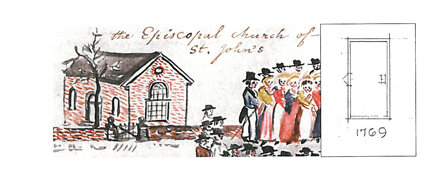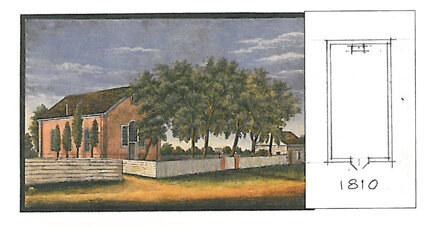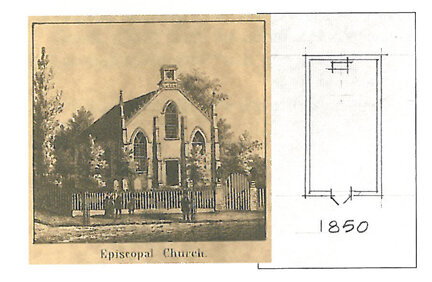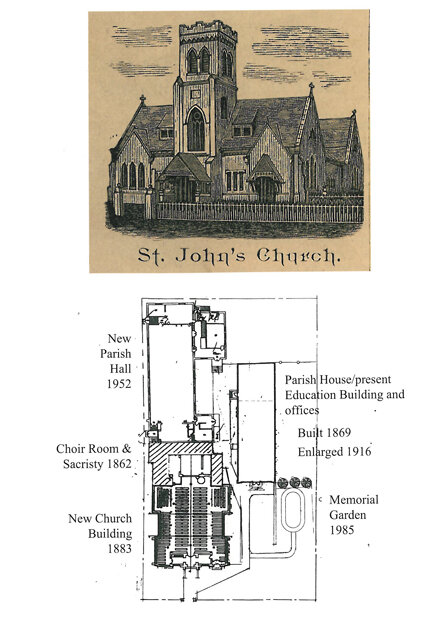York Liberty Bell
Housed in the Parish Commons
Parish History
Although York is named after York, England and, despite the fact the streets were named in typical English fashion (King, Queen, Duke and Princess Street), there were very few English speaking people in this frontier community in 1741. German was the language mostly spoken by the people. However, the few English settlers welcomed the Rev’d. Richard Locke, a missionary sent from London by the Society of the Propagation of the Gospel and he conducted the first church services according to the Book of Common Prayer, of which there is any record in York County. In 1747, Locke wrote: “Ten years ago there was not a white man in all these parts, but all Indians have gone back into the interior.”
The congregation became more established with the arrival in May 1755 of the Rev’ d. Thomas M. Barton. He constantly encouraged his people to defend themselves and not abandon their plantations. He served as Captain in the French and Indian War and as a volunteer Chaplain. Oddly enough, the money to build the first church house came from a lottery enacted by formal legislation of the Provincial Assembly, then largely Quaker. Of the 3,000 pounds to be thus raised, 315 pounds were to be given for the erection of a suitable church in Yorktown. The building was erected in 1769 and some of the original walls may be seen to this day.
The forerunner of the York Academy was organized before the revolution by the Rev’d. John Andrews, an early missionary of St. John. It was the first school of classical learning west of the Susquehanna. Subsequently, Mr. Andrews became an early provost of what is now the University of Pennsylvania. Samuel Johnston, an early church leader and attorney, whose wife lies buried in the churchyard (1767), though a Tory, was teacher of three of the great patriots of our country.
They were Colonel Thomas Hartley, Major John Clark (both of whom were friends of George Washington), and James Smith, a signer of the Declaration of Independence. Major Clark’s tomb is in front of the church. Colonel Hartley lies buried near the Chapel Altar. A tablet in his memory may be seen on the wall of the chancel.
The Revolutionary War years were difficult days for the church. The building was used as an arsenal during the war and later a keg of powder was found under the pulpit. Some have hinted that it was placed there to make sure the Tory rector’s departure was certain. His sentiments of loyalty to the Crown did not suit the patriots of Yorktown. On one occasion, this early pastor (Daniel Batwell) was brought to the county jail to dry after having been thrice ducked in the Codorus River by certain zealous “Lovers of Liberty”.
Visitors at St. John may see the historic York Liberty Bell mounted and displayed in the church. It was given to the parish in 1774, most likely sent from London by The Society for the Propagation of the Gospel. There being no belfry in the church at the time, the bell was placed on the pavement in the town square. Tradition claims when news of the Declaration of Independence reached York, the bell was hoisted by James Smith, a signer of the Declaration of Independence, and other men and boys to the cupola of the Court House and rang the bell for the first time proclaiming the glad tidings of the signing of the Declaration of Independence, 1776. It called the Continental Congress to its sessions when, for nine months; York was the temporary Capital.
The Rev’d. William White, later one of the first Bishops of the Protestant Episcopal Church of the United States of America, was Chaplain to the Congress and held services in York.
The churchyard is said to be the oldest burying place in York. Many graves antedating 1800 are there, including some Hessian prisoners-of-war. This graveyard was the scene of a dramatic episode associated with the “Conway Cabal” –the plan to oust Washington and replace him with General Gates. A duel was planned to be fought in the graveyard between General Horatio Gates and Colonel Wilkinson, a member of his staff. This was called off at the last moment when Gates apologized to Wilkinson although all but Gates himself were on hand among the graves and the pistols were ready for use.
From these humble beginnings, St. John has continued to serve Christ and the people of this community. For many years St. John had the only free library in this area. When the Martin Memorial Library was opened, the books of St. John’s Library were transferred to that location. The St. John Boys’ Club, the Boys’ choir, the Mothers’ Club and the Girls’ Friendly Society served the youth and citizens of York well. The Sunday School was organized by the men and women of the parish to provide an opportunity to teach the Lord’s prayer, the Ten Commandments, the Creed and Holy Scripture to those in the community who did not attend any church. These sessions were usually held on Sunday afternoons and conducted by the faithful women of the parish.
The church building has been enlarged on four occasions. In 1810, the gallery was built. Further enlargements were made in 1850, 1862 and 1882. It was in 1882 that the side walls were removed and placed on a line almost parallel with the transepts. Pillars were introduced to support the roof. The tower was incorporated into the building, also a new Narthex and porch were added. Music has always played an important part in the services. The present organ, a three-manual Casavant of 35 ranks and 1,816 pipes, was installed in 1964.
Historical Highlights
The Episcopal Church of St. John the Baptist has a long history. In 2005, the church celebrated its 250th year. As a part of that celebration a pictorial history was prepared. The following are copies of these historical highlights.
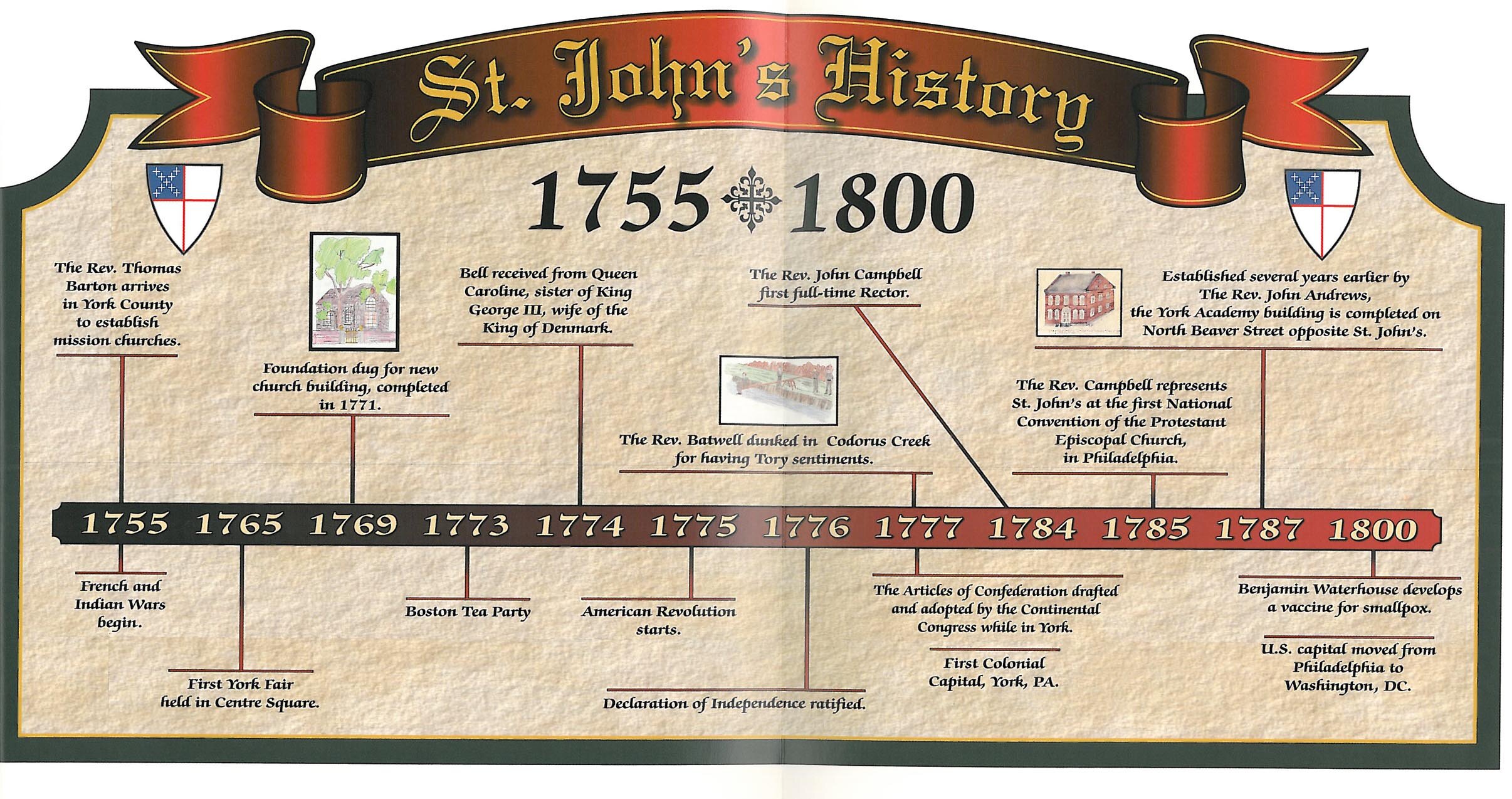
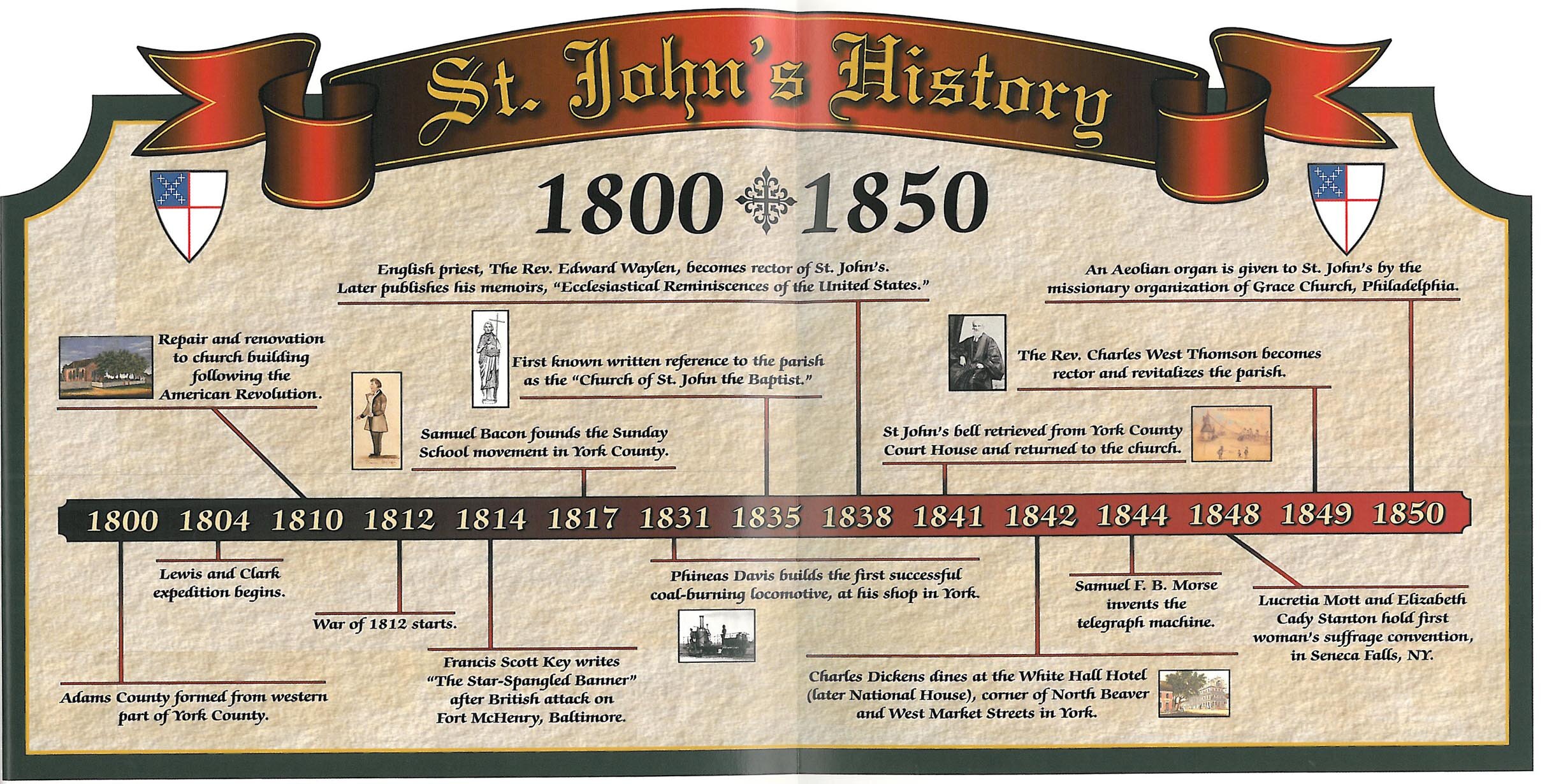
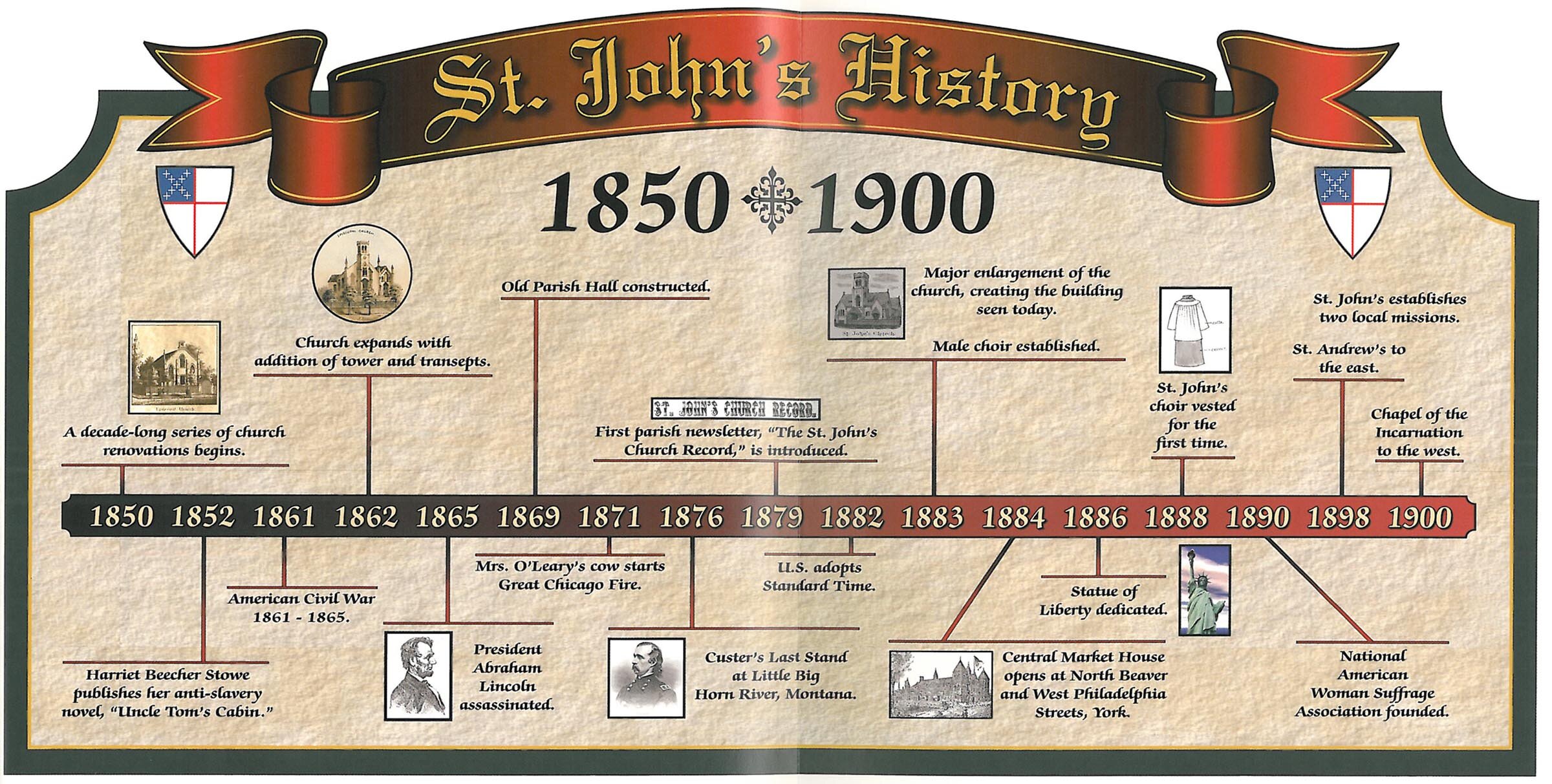
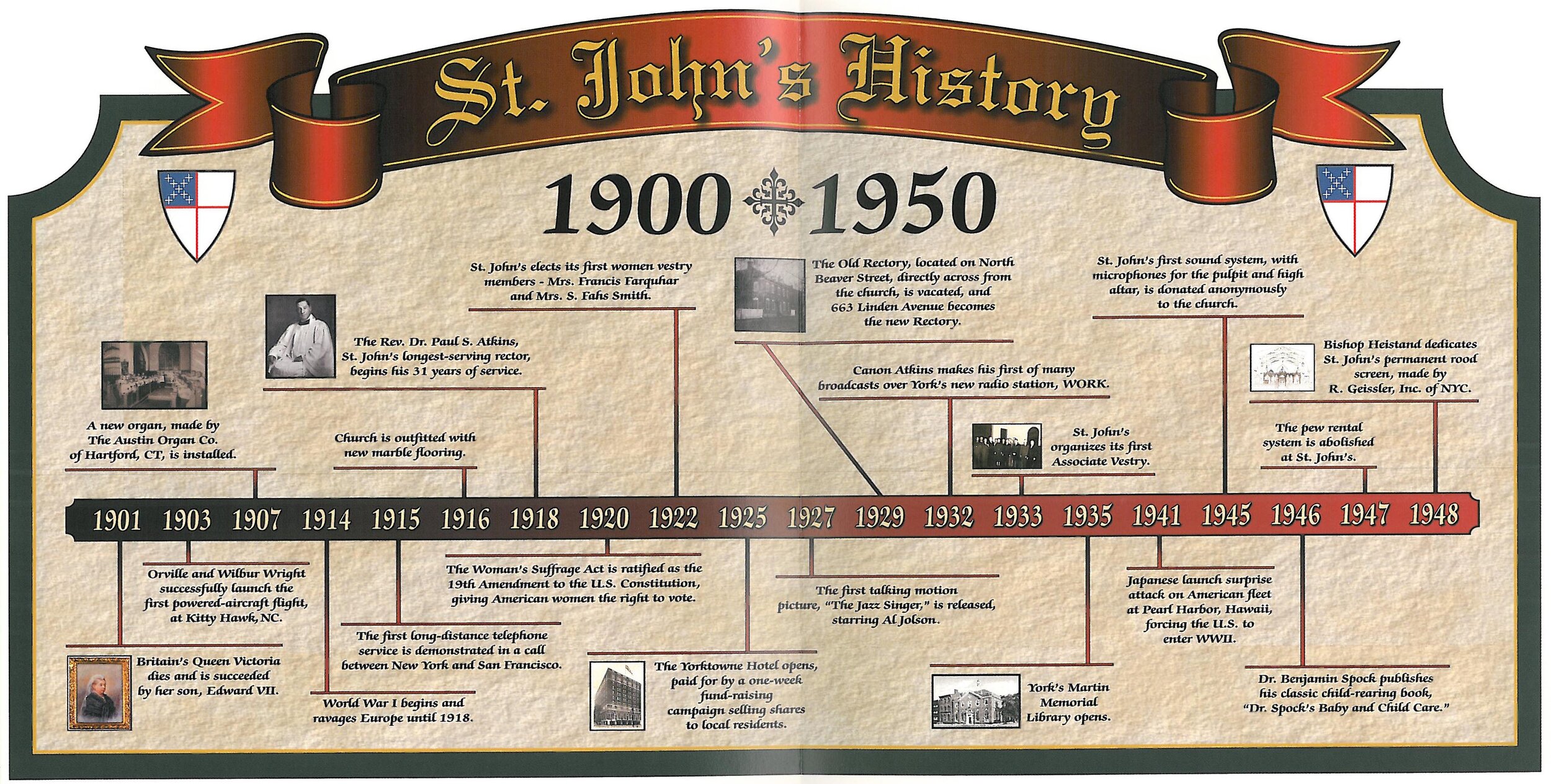
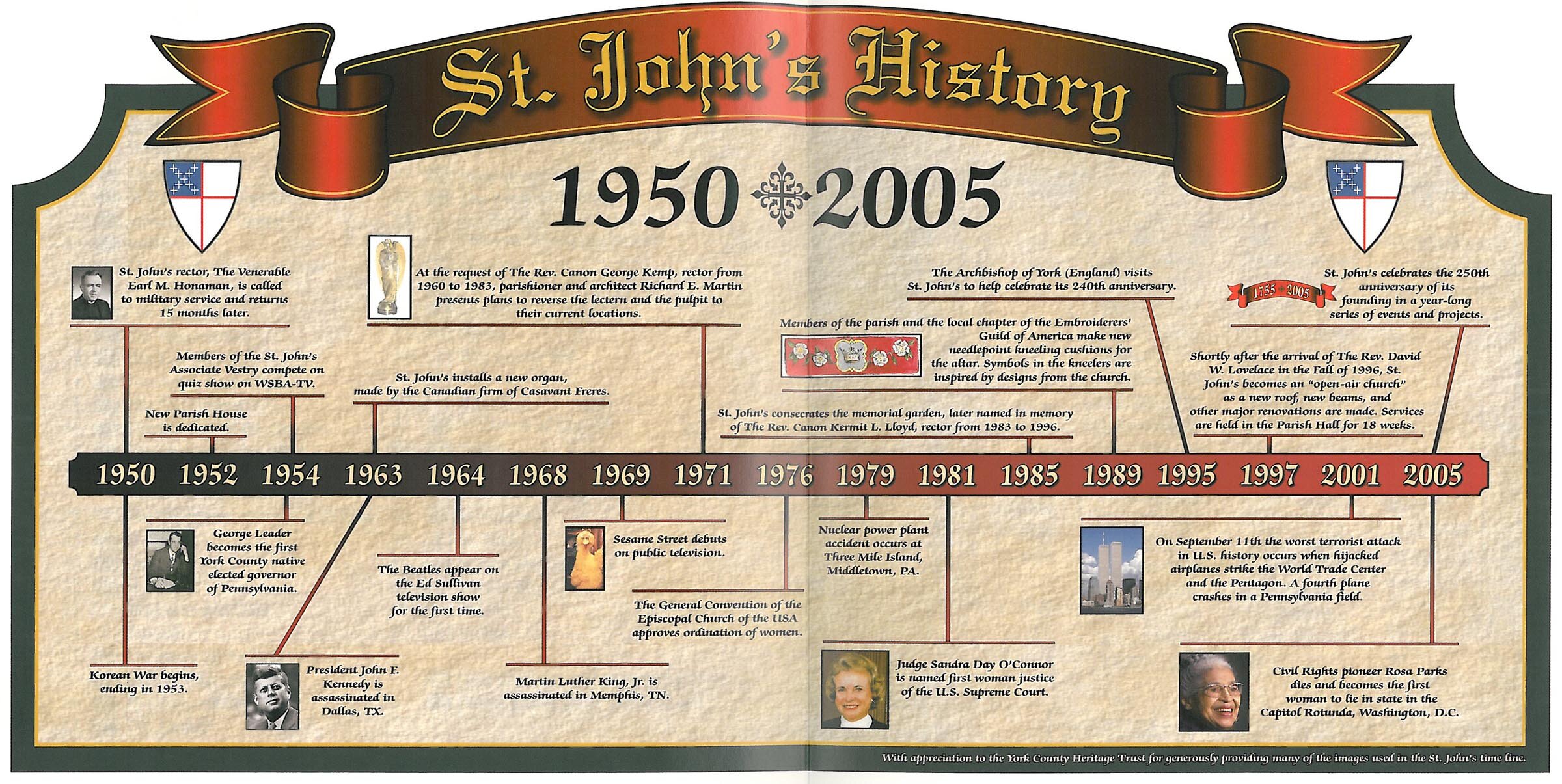
The Changing Footprint of St. John’s, 1769 to 2005
Many hands have gone into the design and construction of St. John’s, some known to us and some not. Working at different times and building on the accomplishments of those who have gone before, these architects and craftsmen helped to shape the church that is the home of our present-day ministry in York. We are in their debt for the beauty of St. John’s.
The 1883 footprint of the “new church building” was created by renowned local architect, John A. Dempwolf, and his plans for St. John’s are in the library collection at the York County Heritage Trust. St. John parishioner and architect, Richard E. Martin, revised that drawing for us to show subsequent expansions, and also drew the earlier footprints to illustrate the first 100 years of the church’s growth. We have added elevation illustrations to represent the corresponding changes in exterior appearance.


